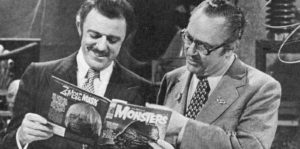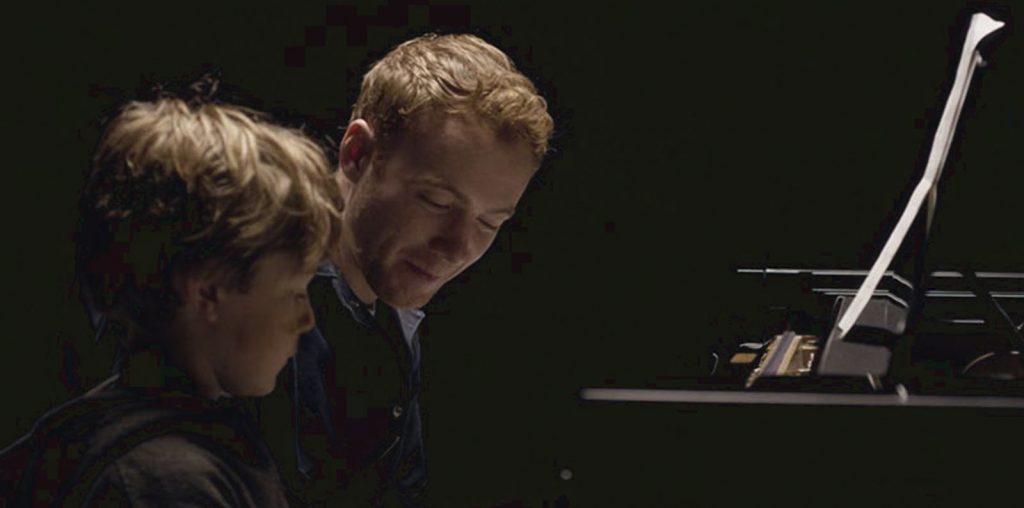
For scores of young men, the War intervened, and Ackerman spent three years in the U.S. Army after enlisting on August 15, 1942, rising to the rank of Staff Sergeant. While serving at Fort MacArthur in California, he was editor of his base’s newspaper. His younger brother, Alden Lorraine Ackerman, was killed during the action popularly known as “The Battle of the Bulge.”
He came back and found the beginning of the Golden Age of Science fiction with pulp books filling rotating carousals and magazines. He knew most science fiction writers and settled in as a literary agent, representing some 200 writers. He was Ed Wood’s “illiteracy” agent, as he put it. Ackerman was credited with nurturing and inspiring the careers of several early authors like Ray Bradbury, Charles Beaumont, Marion Zimmer Bradley, and L. Ron Hubbard. He kept all the stories submitted to his magazine, even those he rejected, including one by a young fellow called Stephen King, submitted at the ripe old age of eleven.
Ackerman was married to a German-born teacher and translator, Mathilda Wahrman (known as Wendy), whom he met in the 1950s while she was working in a bookstore. The couple separated during the late 1950s and early 1960s. They remained officially married until she died in 1990 because of serious internal, irreparable injuries to her kidneys when Wendy was brutally mugged while on a trip to Italy.

“…inspired to launch a magazine ‘carefully crafted to spoof the monsters and treat them as heroes.'”
Ackerman once said he wrote multiple letters to Carl Laemmle, who was then head of Universal Studios during the thirties. Universal was producing what would now be the Classic Universal Monster cycle of film. He said he wrote so many letters pestering Laemmle that the studio head began sending Ackerman items. They became housed in various homes or museums known as the Ackermansion or various derivatives that were open to the public for free. This collection of material, particularly the monster movie stills, came to the attention of struggling publisher James Warren.
In the 1950s, James Warren had the gift of ‘getting things done.’ He was inspired by Hugh Hefner’s magazine Playboy, so he launched his own men’s magazine called After Hours, which lasted four issues and led to his arrest on charges of obscenity and pornography.
Through After Hours, Warren met his future collaborator, literary agent Ackerman, who submitted a pictorial feature, “Girls from Science-Fiction Movies.” After correspondence, money talks, and telephone calls, the two met in person in New York City in late 1957. Ackerman showed Warren a horror-themed issue of the French magazine Cinema 57. The two were inspired to launch a magazine “carefully crafted to spoof the monsters and treat them as heroes” aimed at twelve to fourteen-year-old boys.
The first issue of Famous Monsters of Filmland (it was to be a ‘one shot’ magazine) was born a few weeks later in Forry Ackerman’s living room in California. Ackerman had the title of editor, but it was Jim Warren who did all the work. Warren would choose the pictures and do the layout, and Ackerman would write the copy. Famous Monsters of Filmland went on sale that January with a February 1958 cover date and sold out with a limited run. Forry Ackerman and James Warren were at the beginning of the original monster craze of the sixties.

